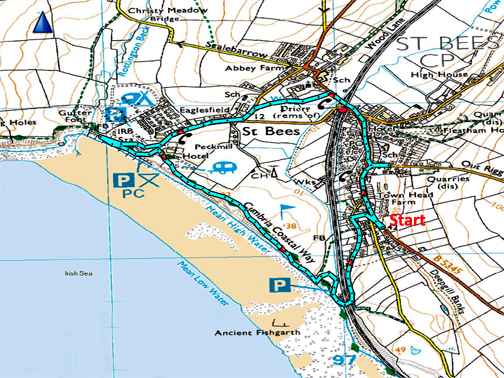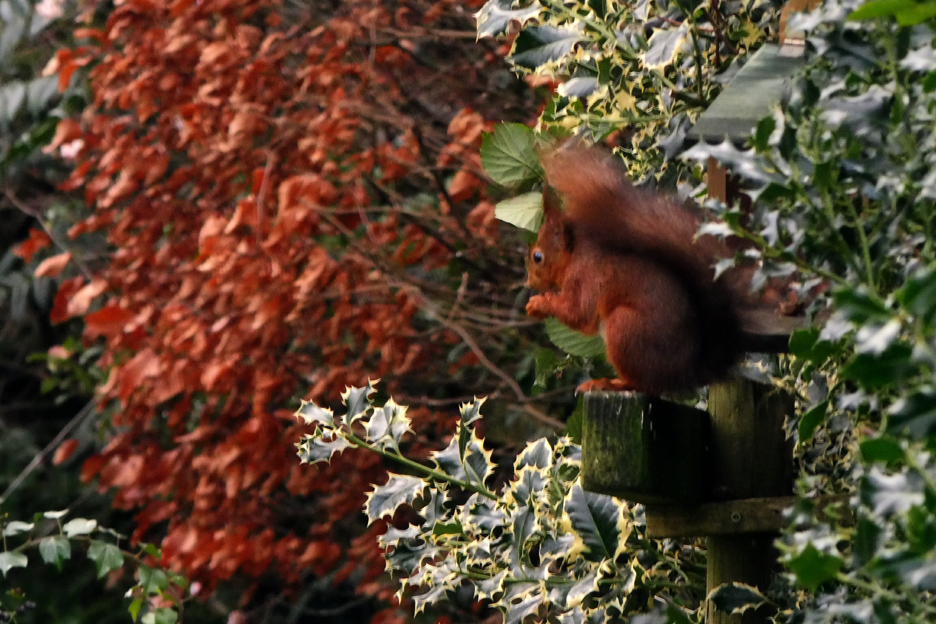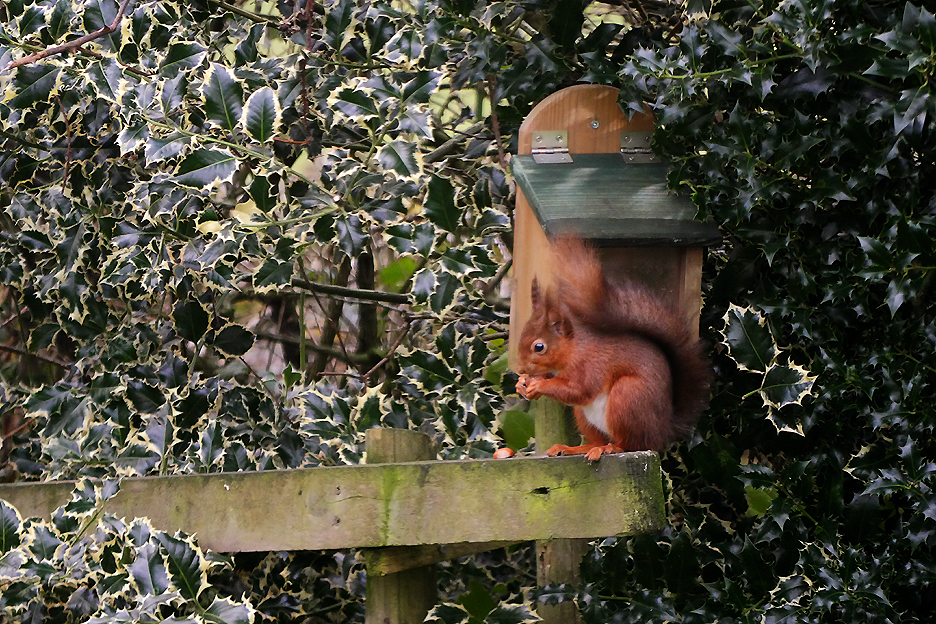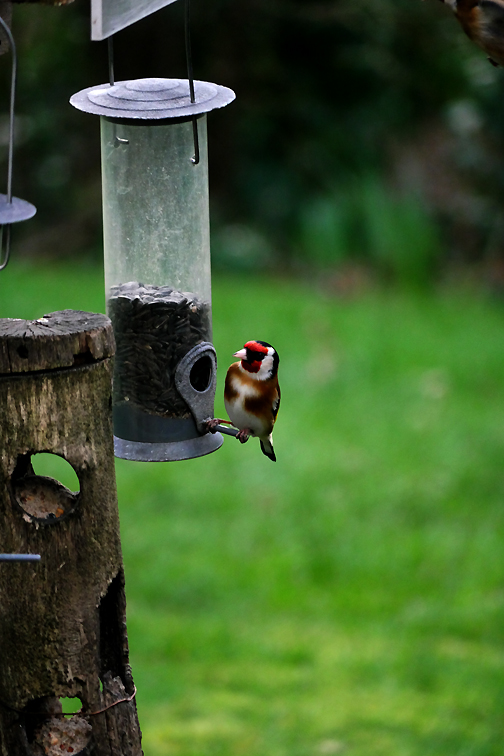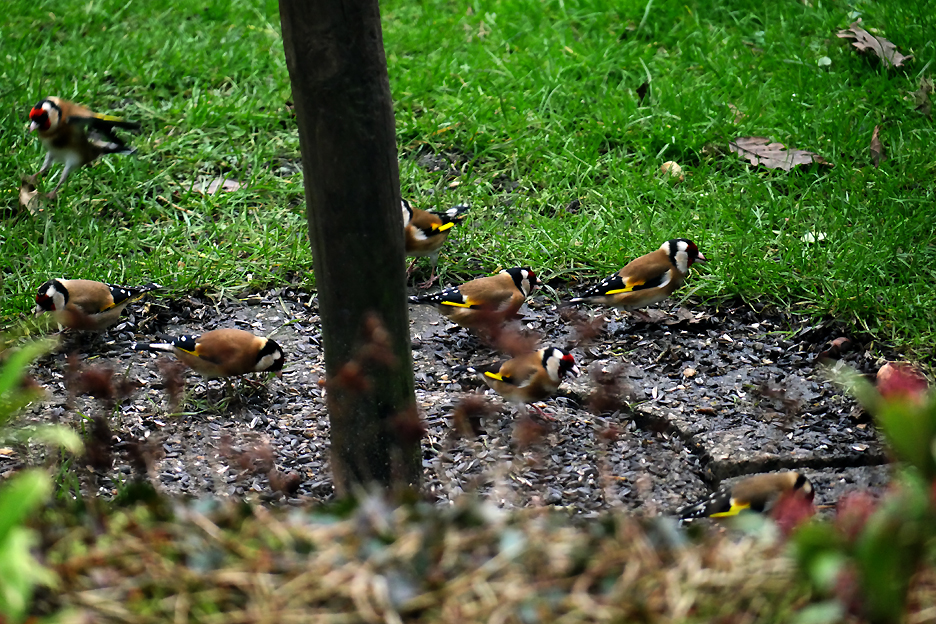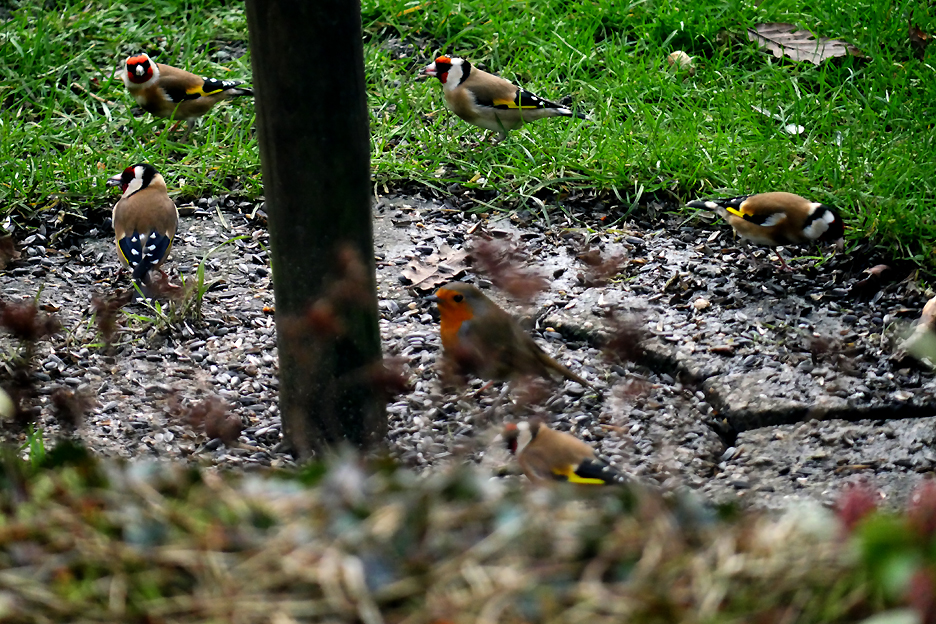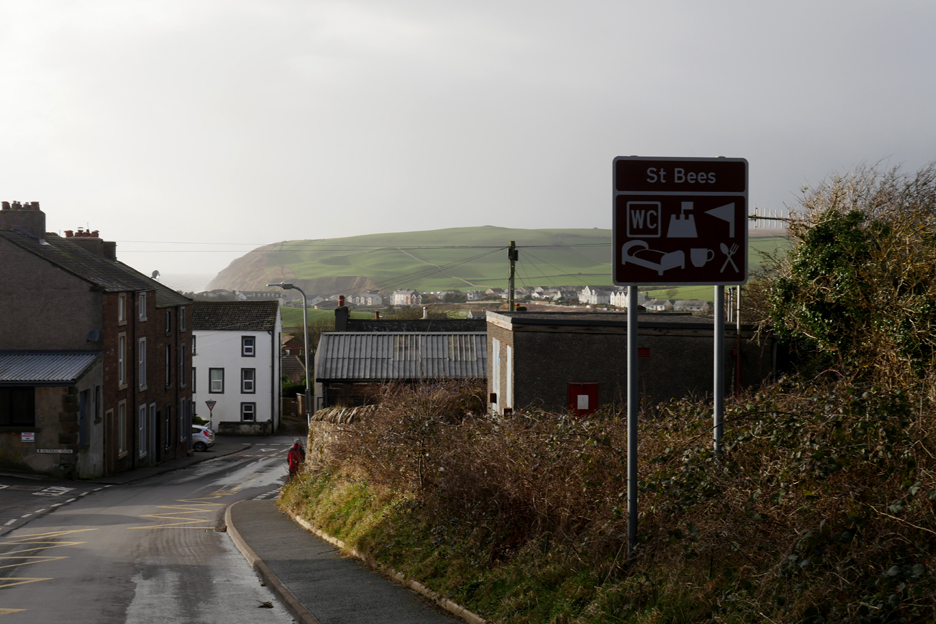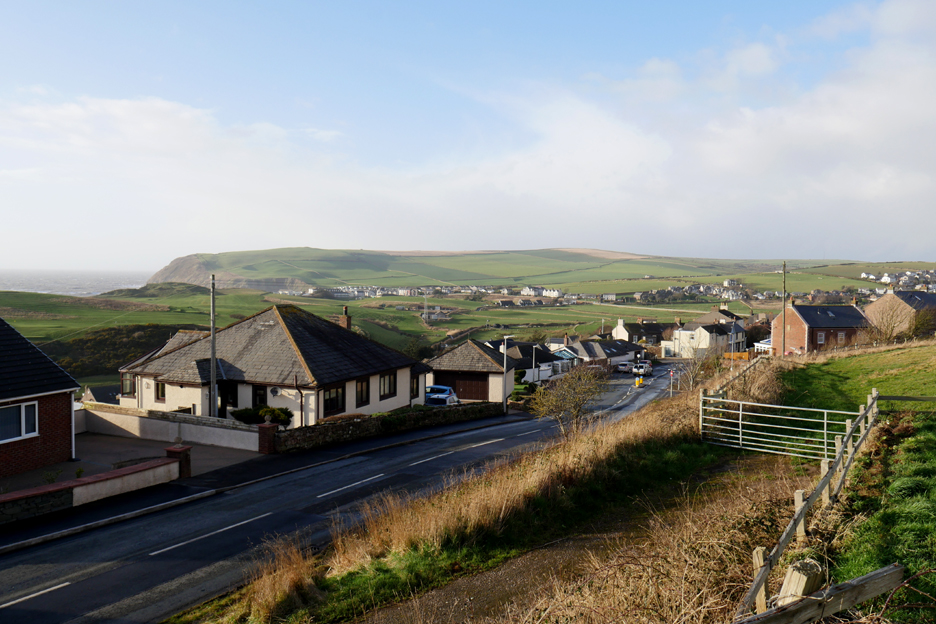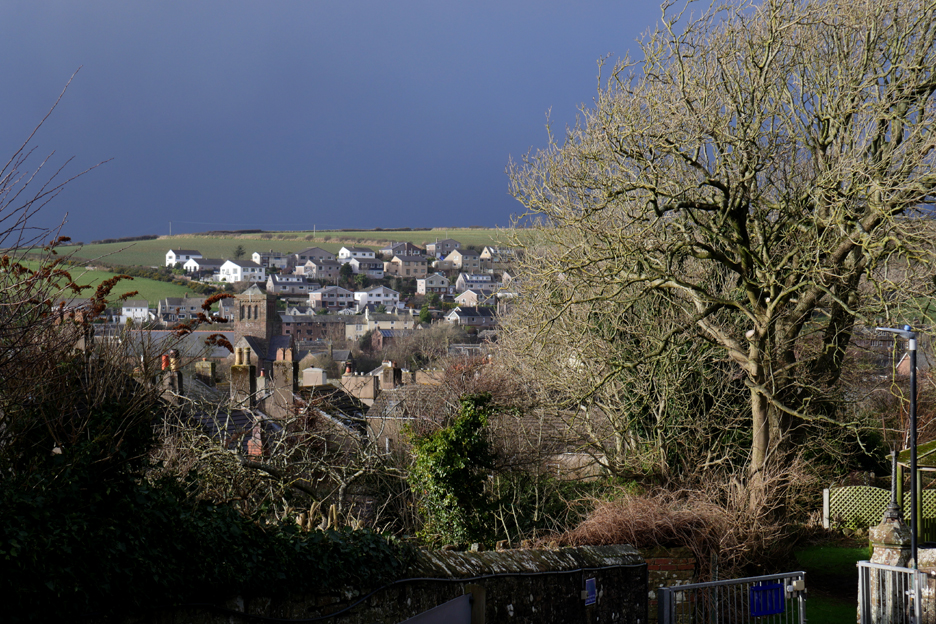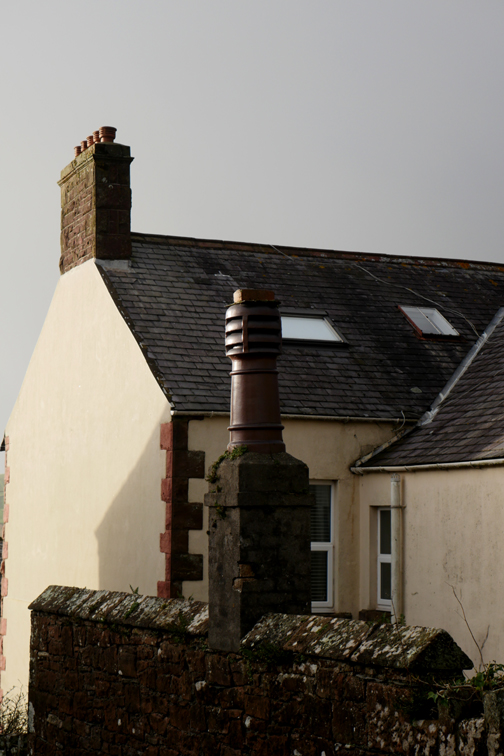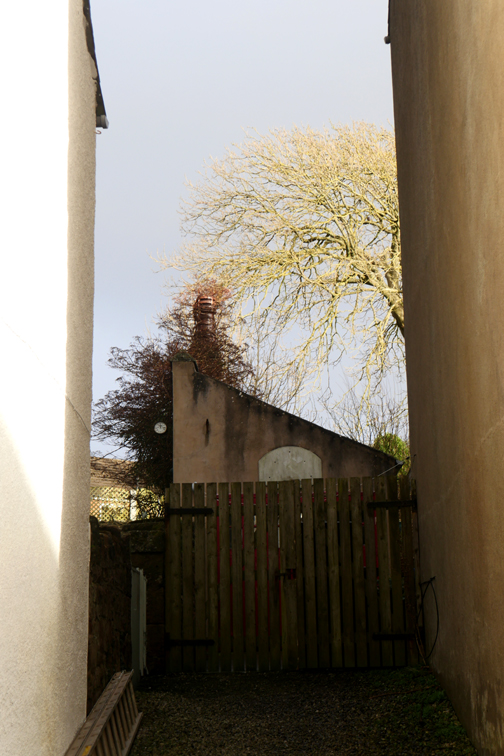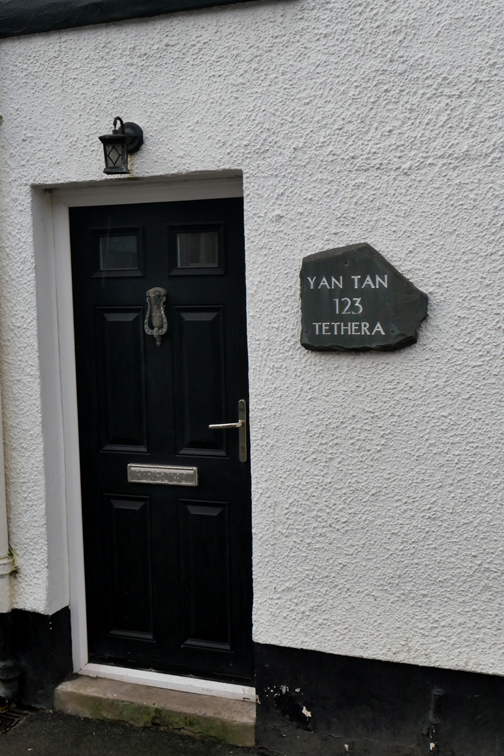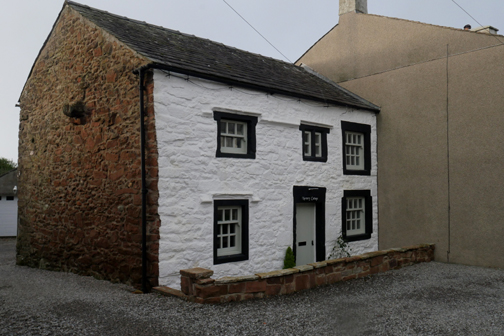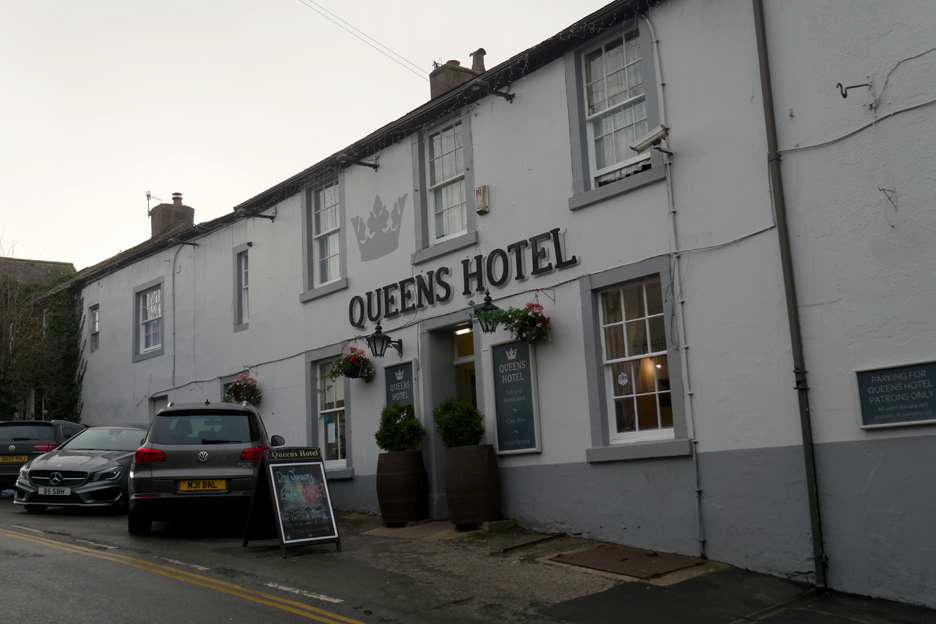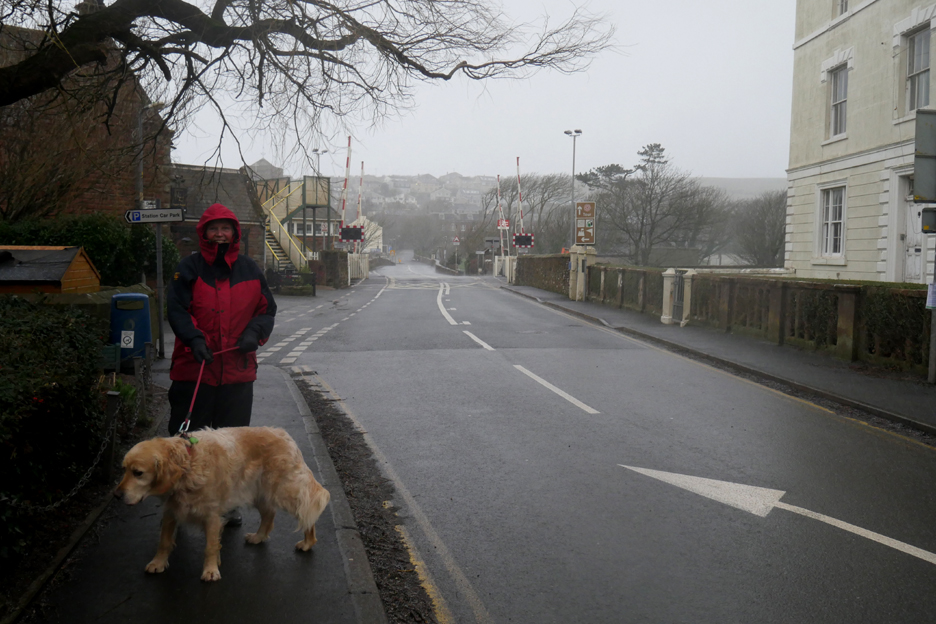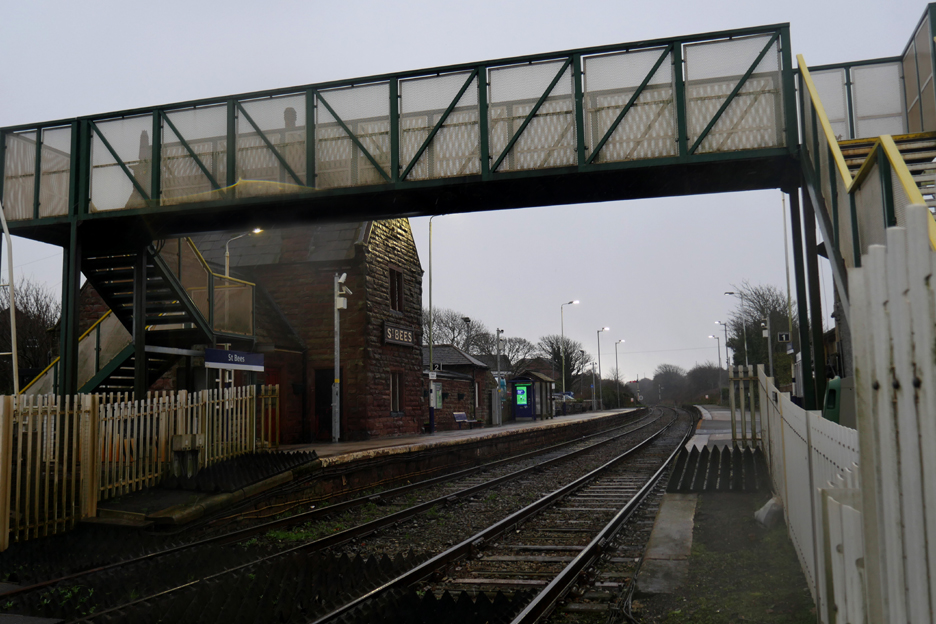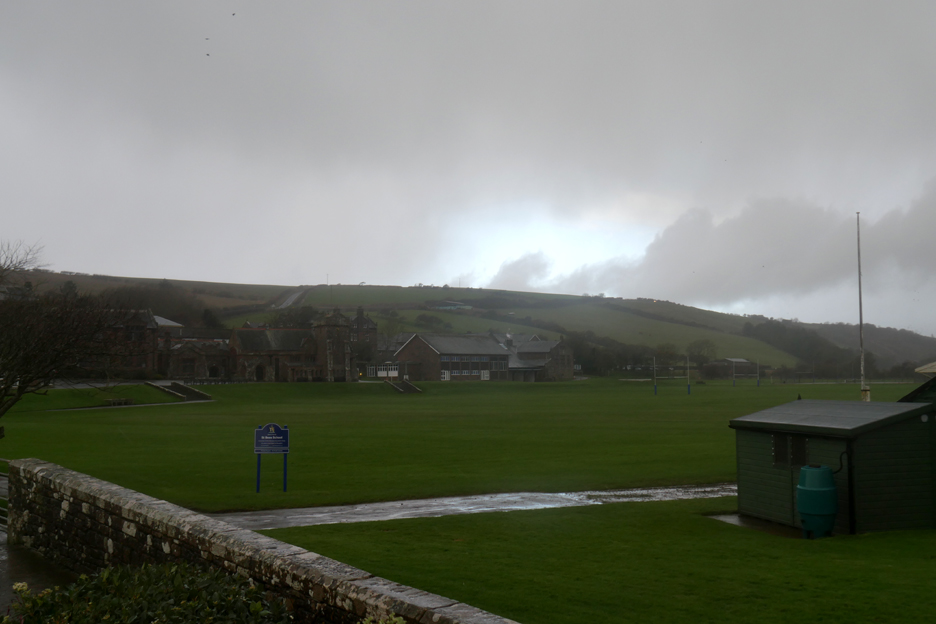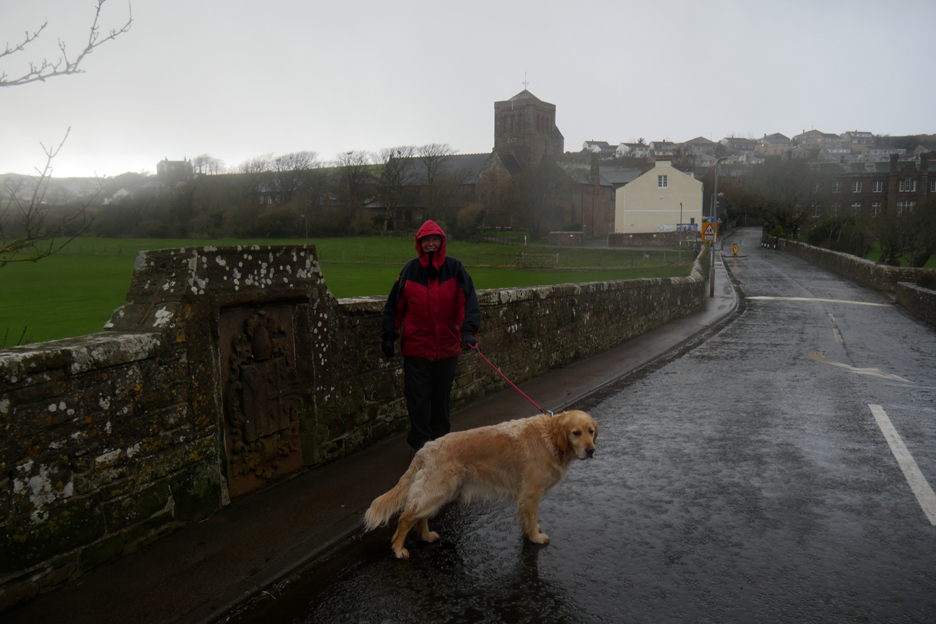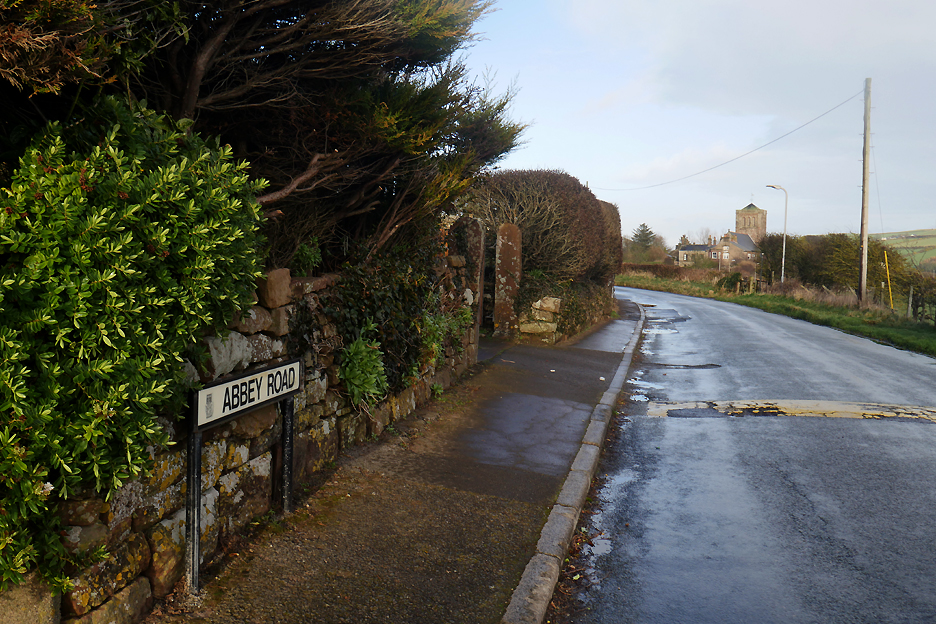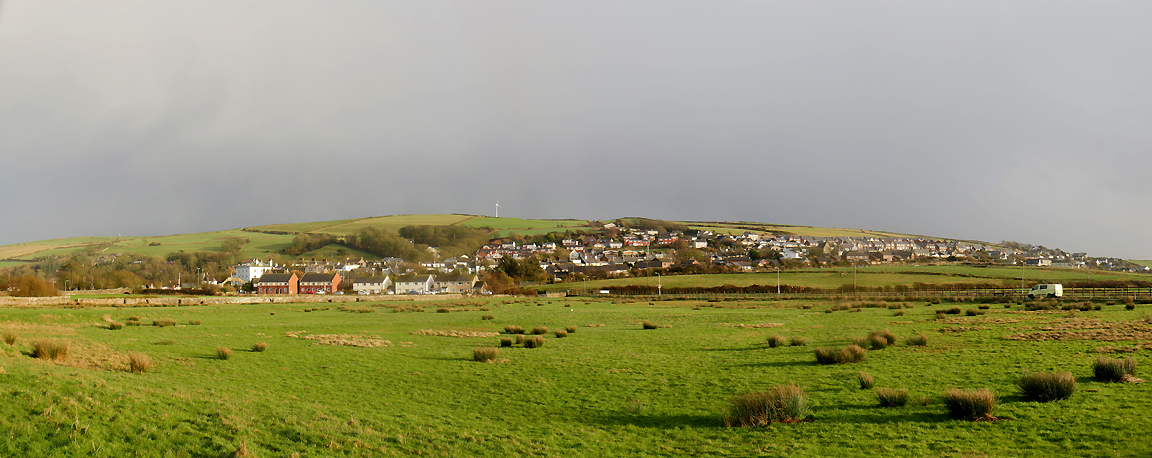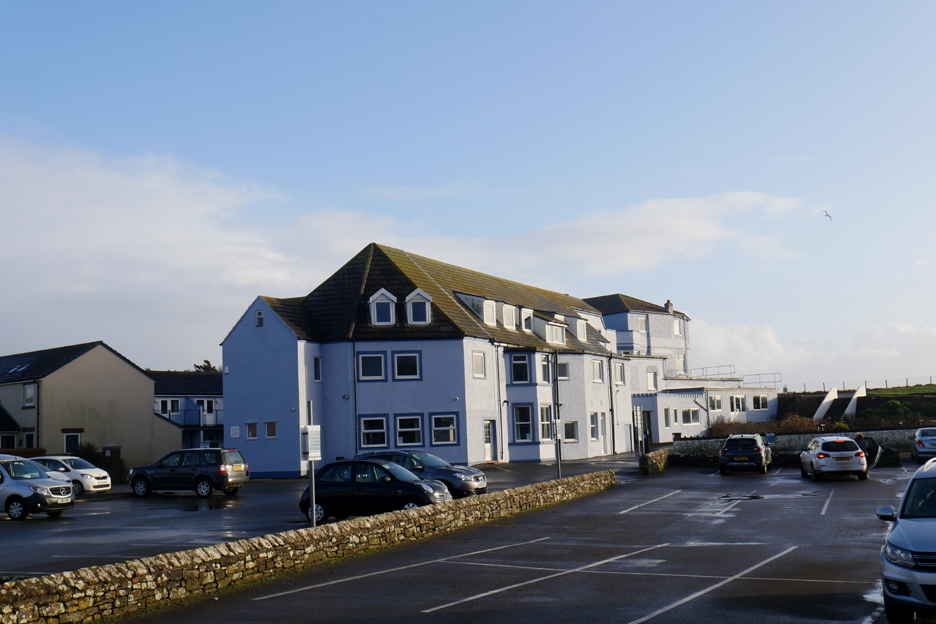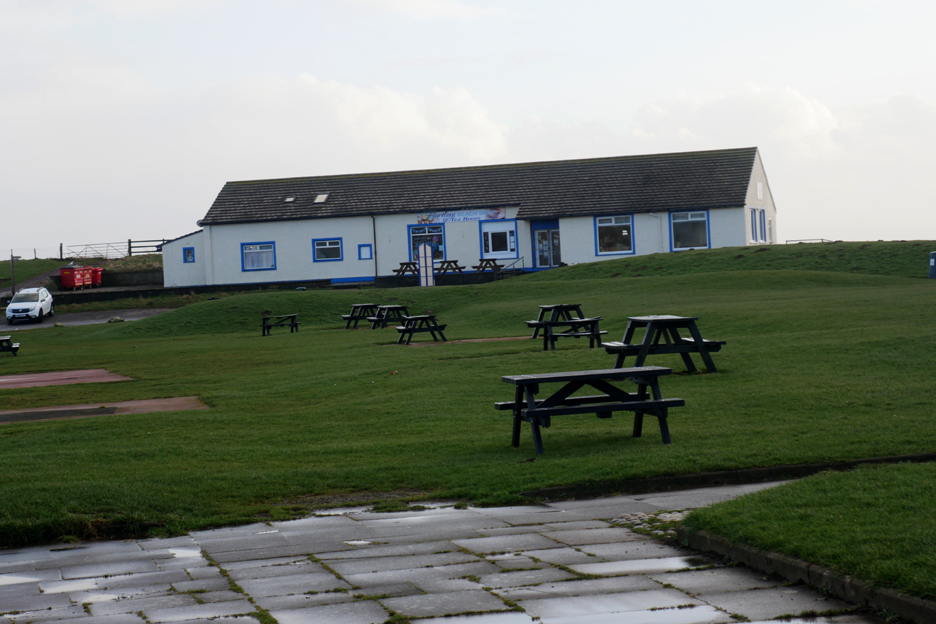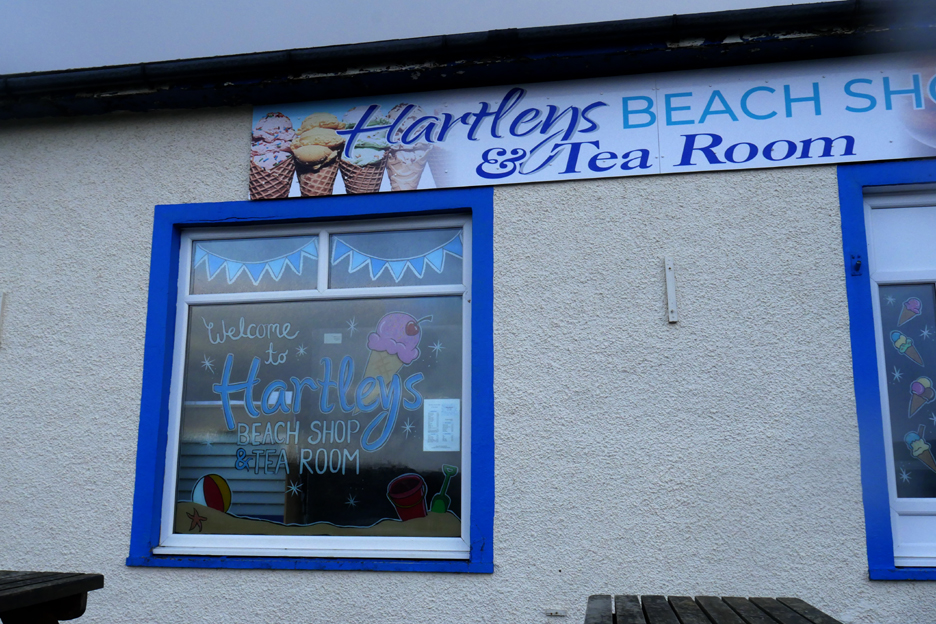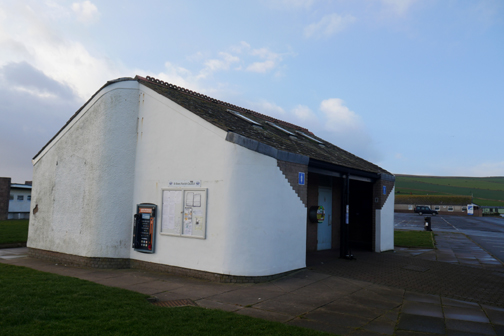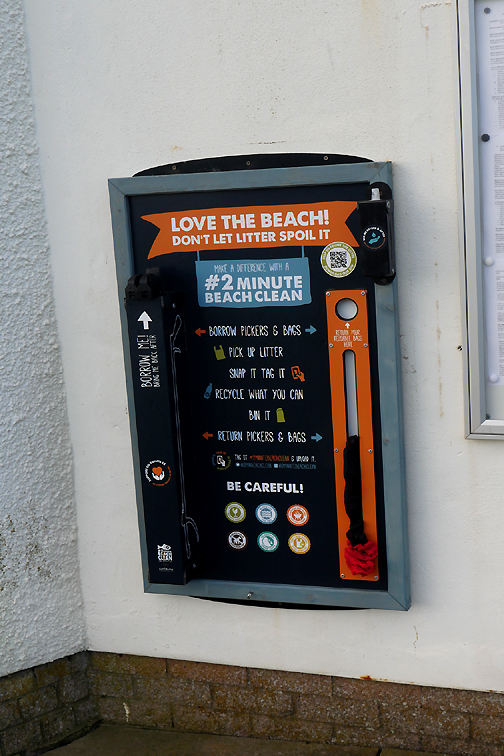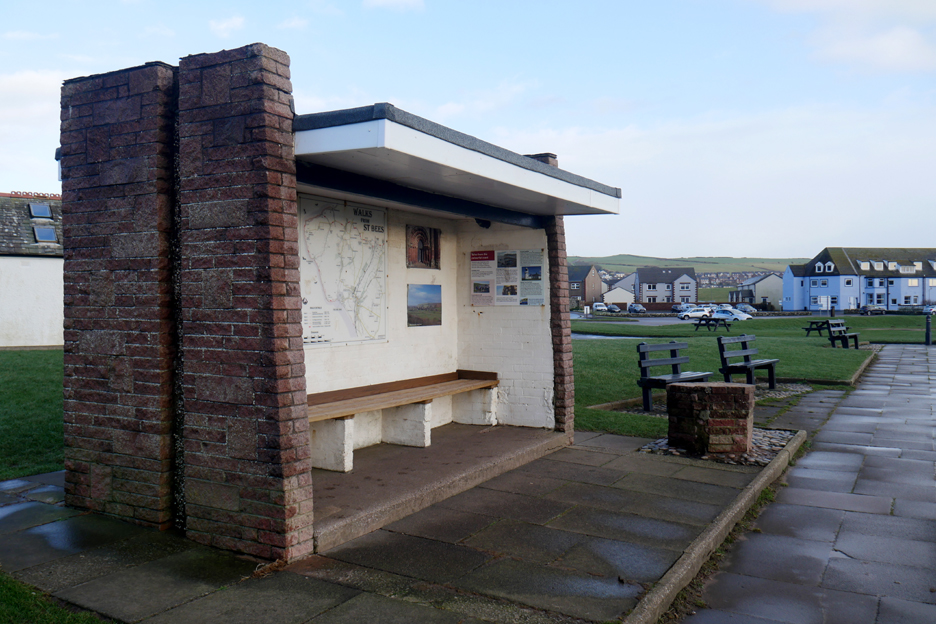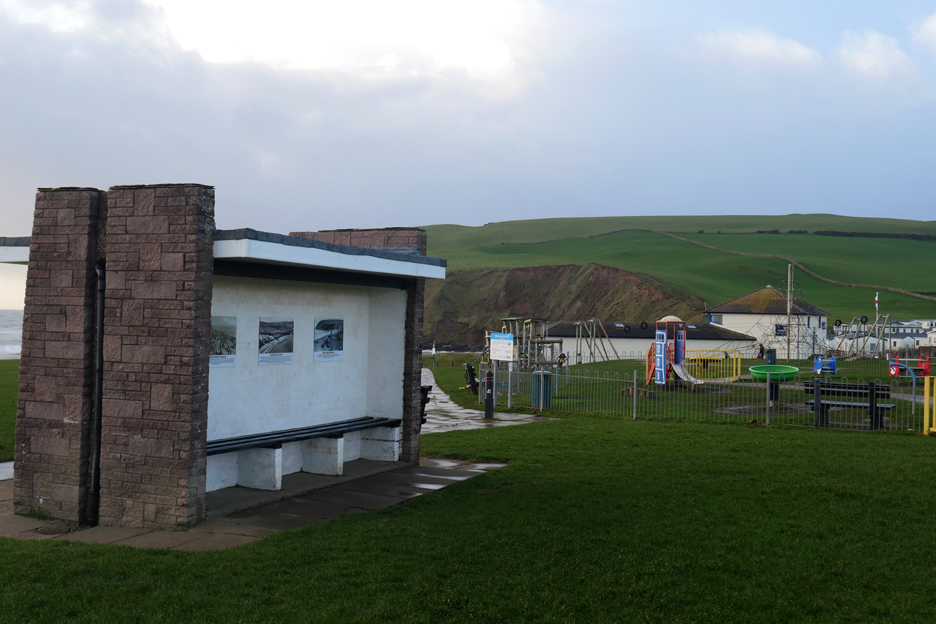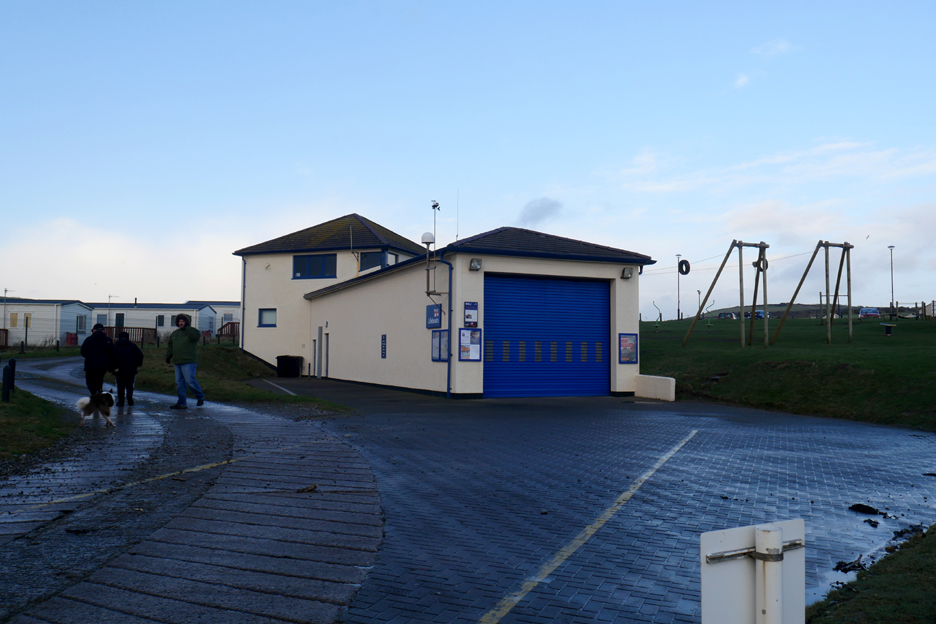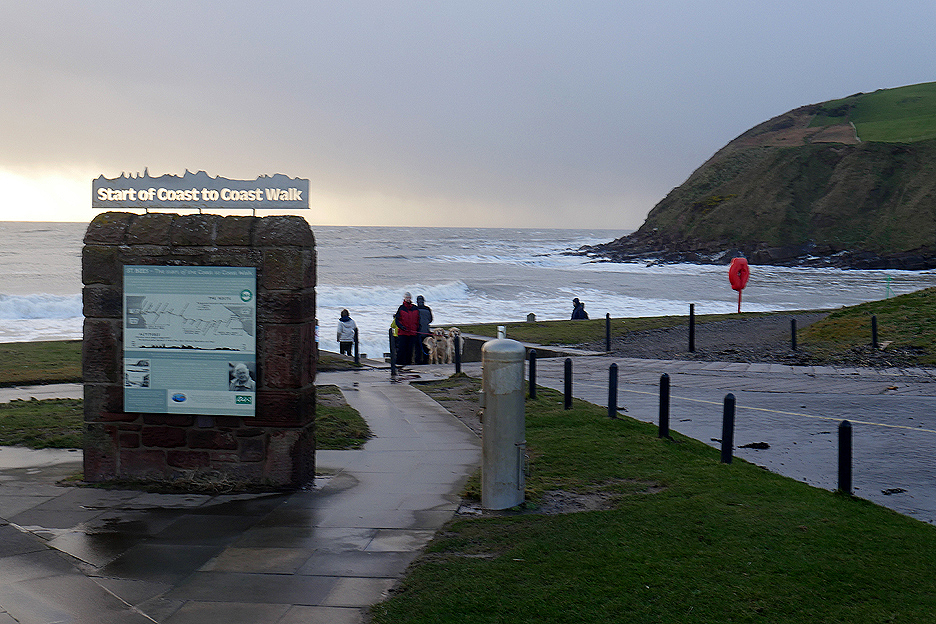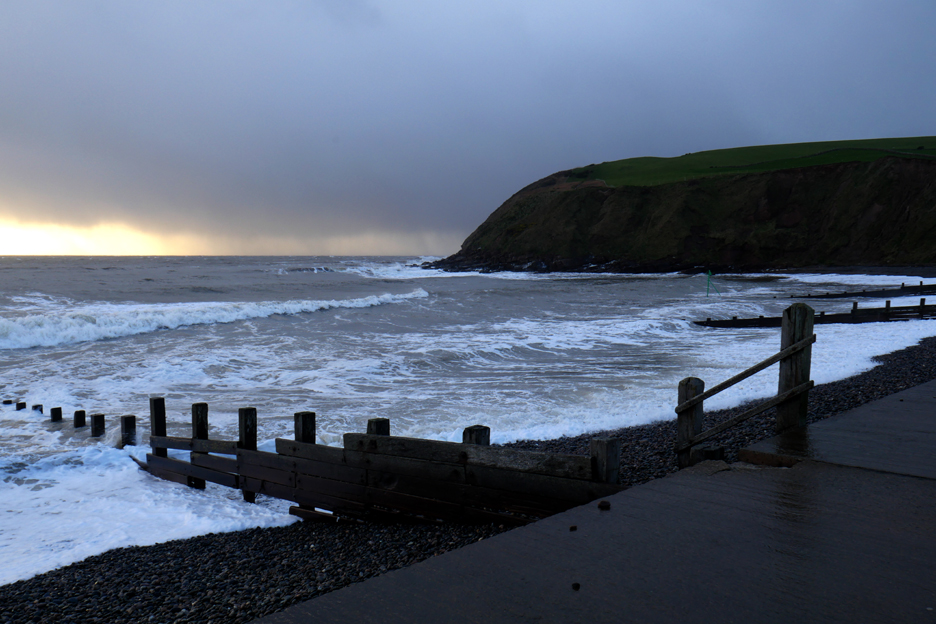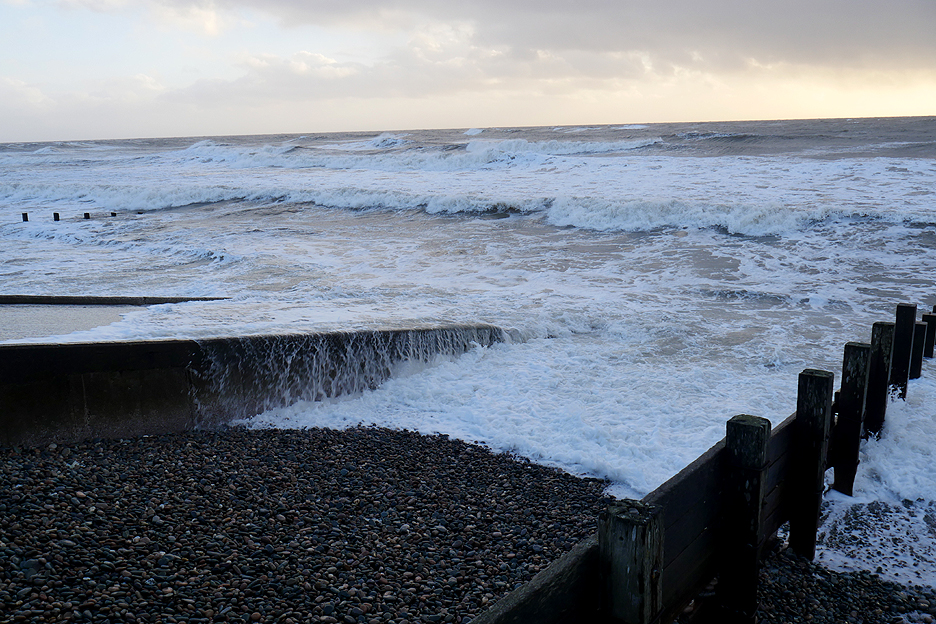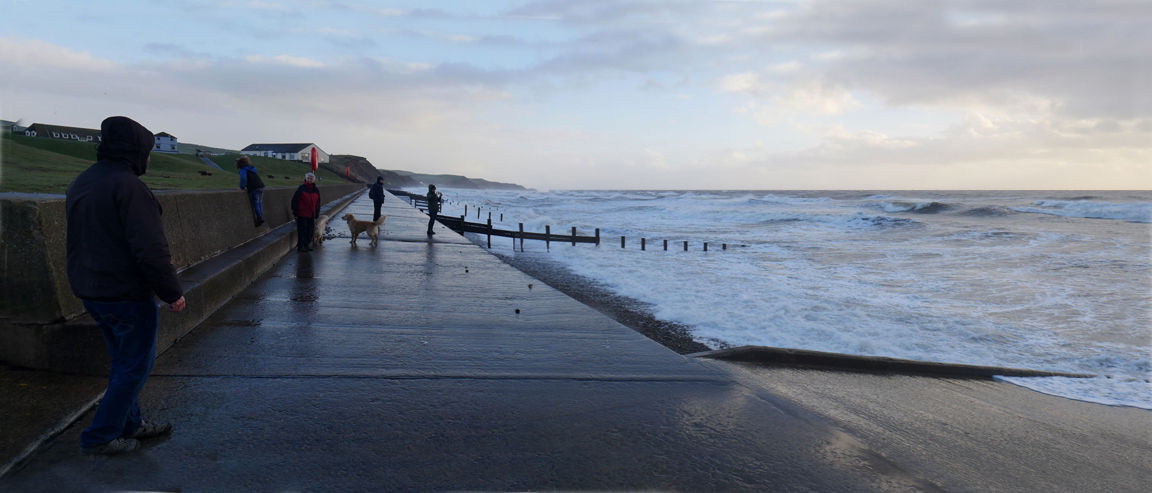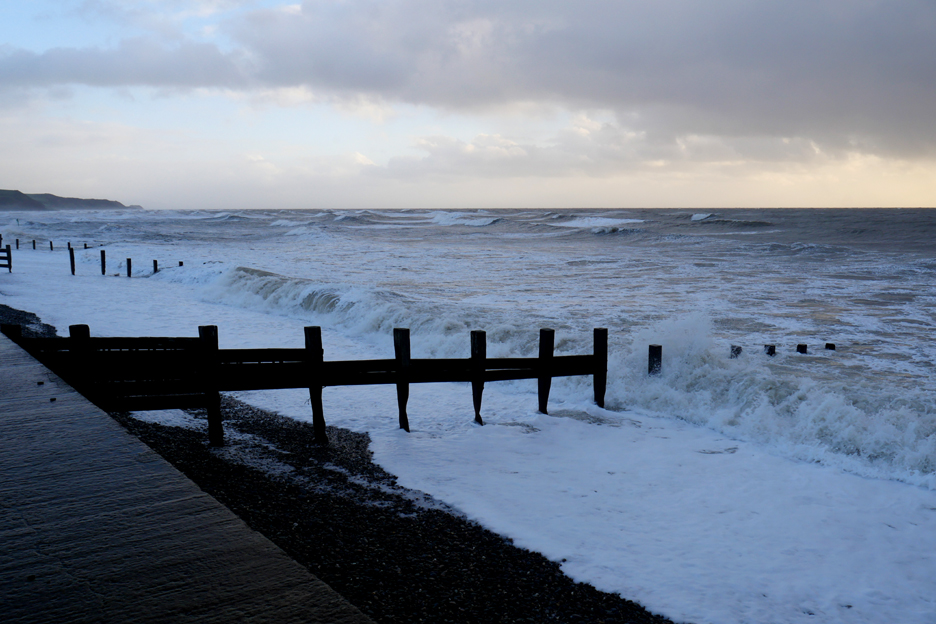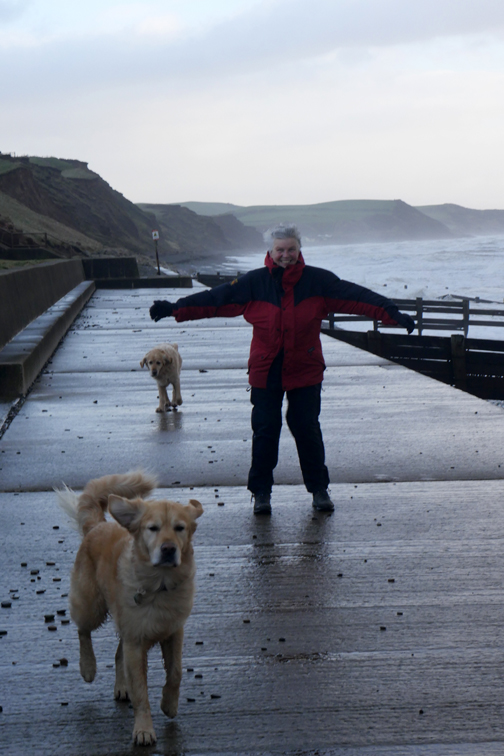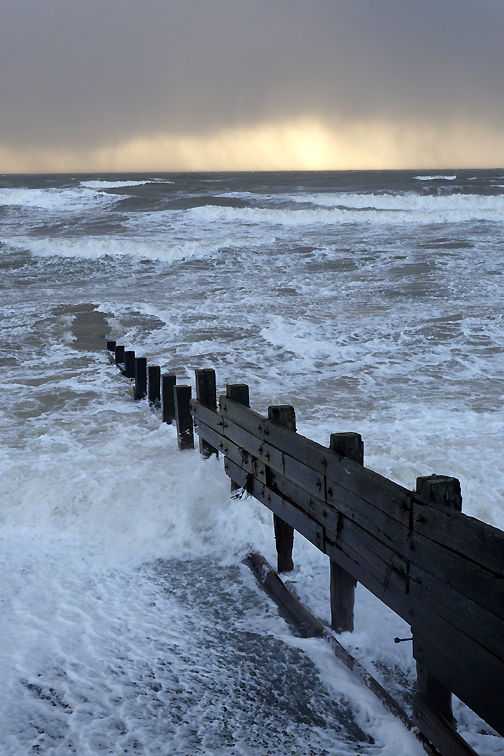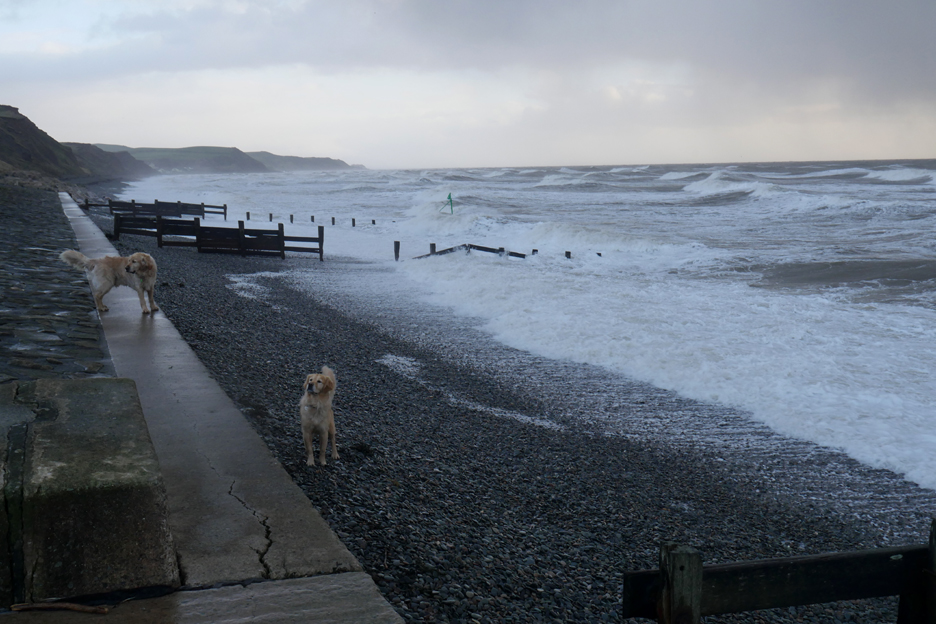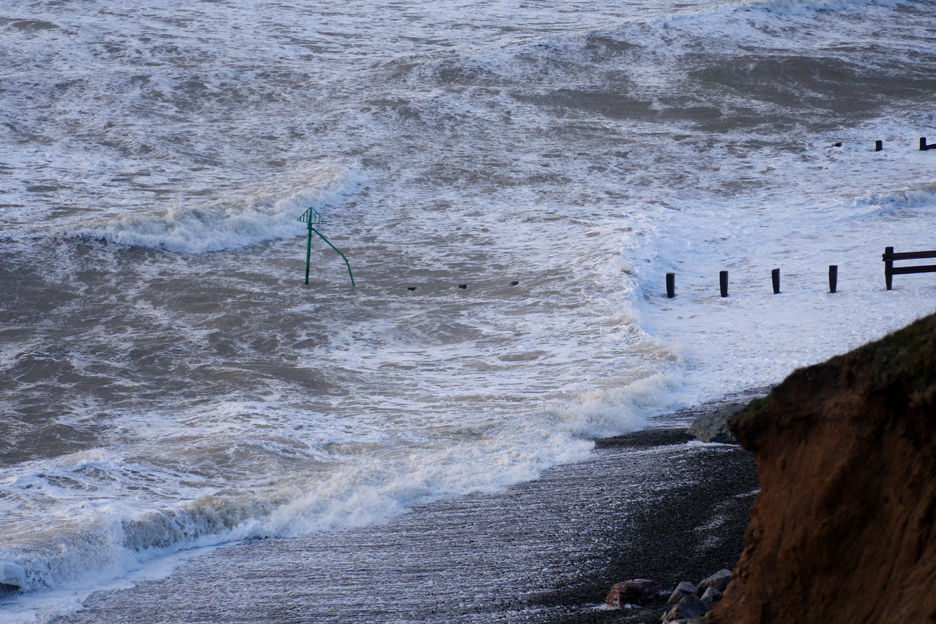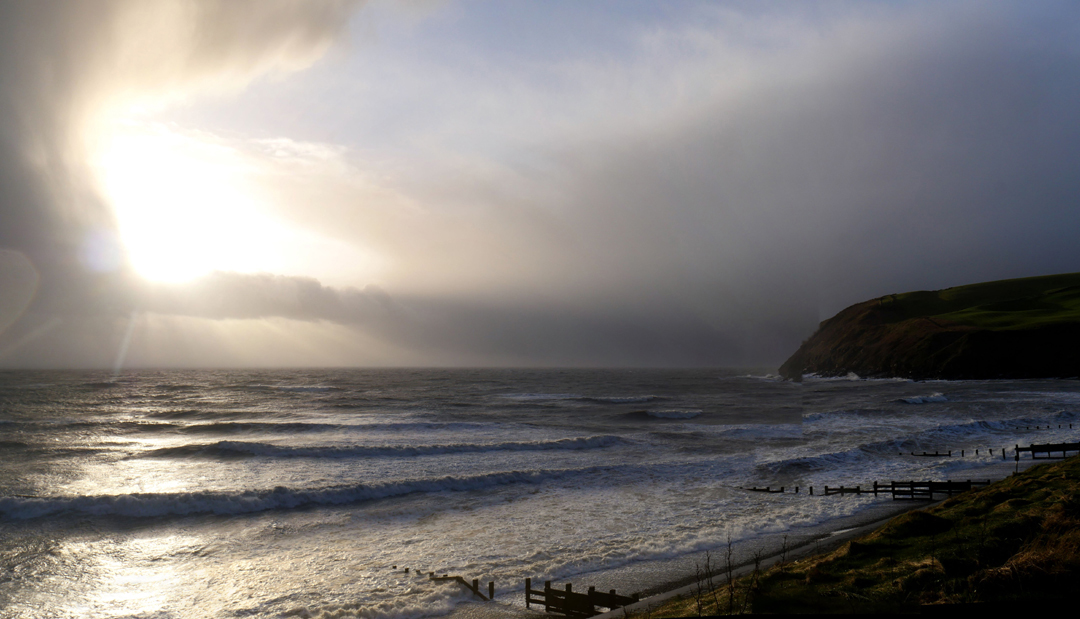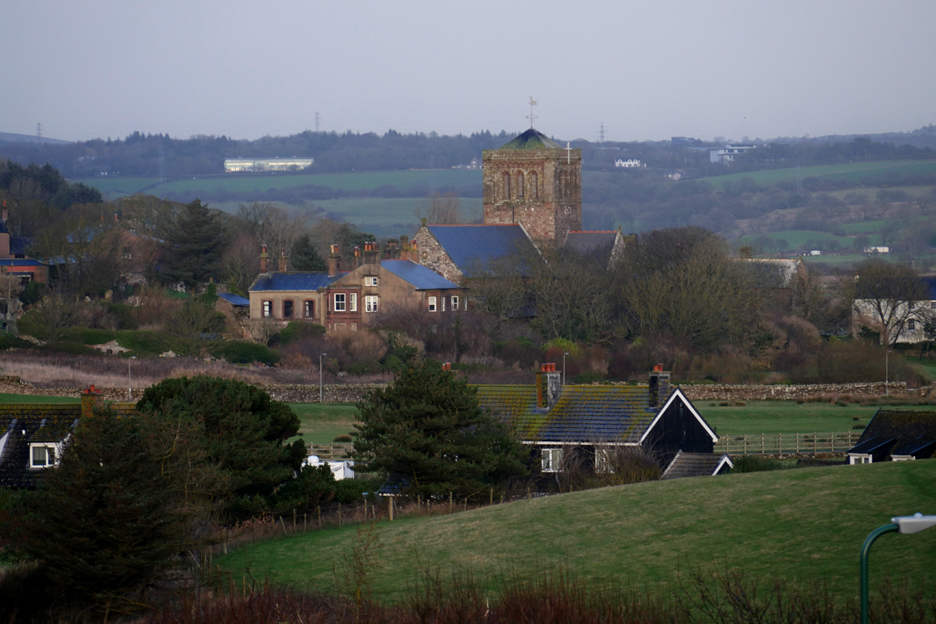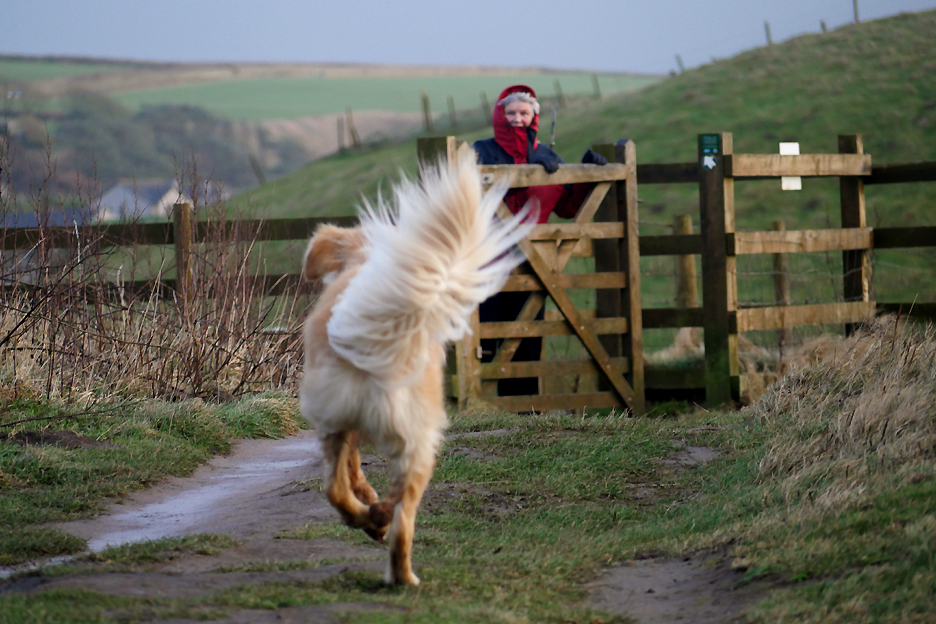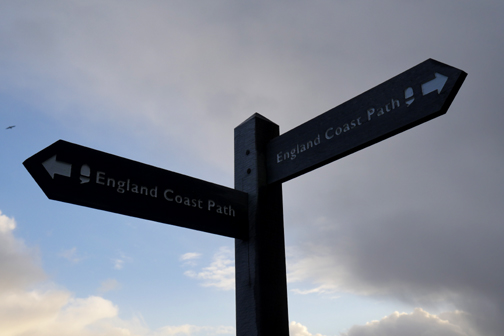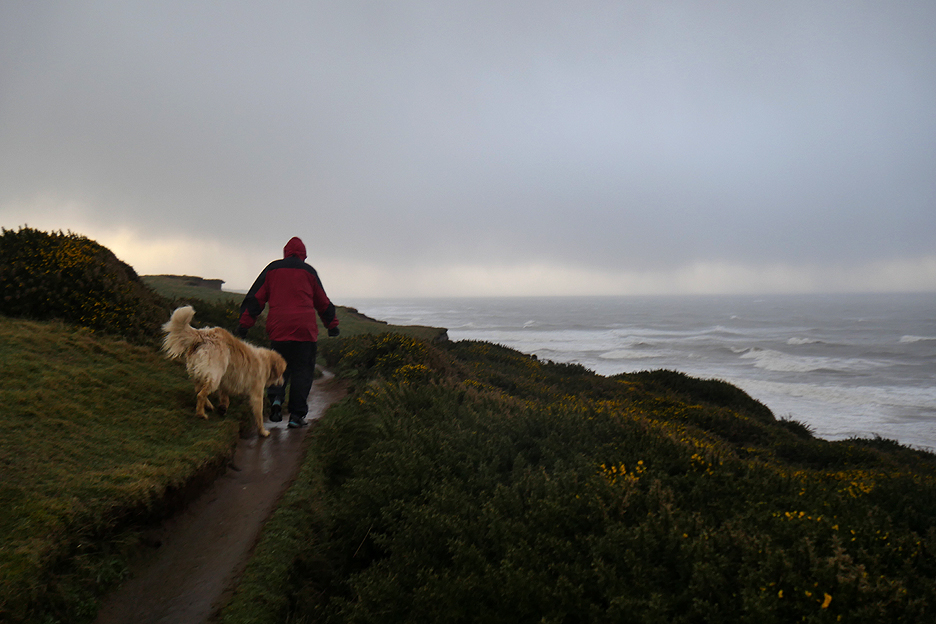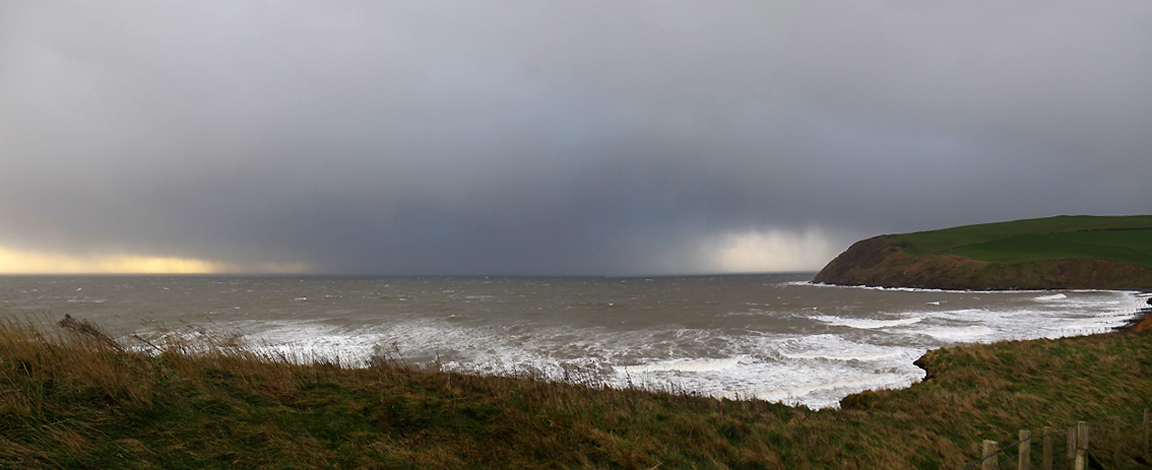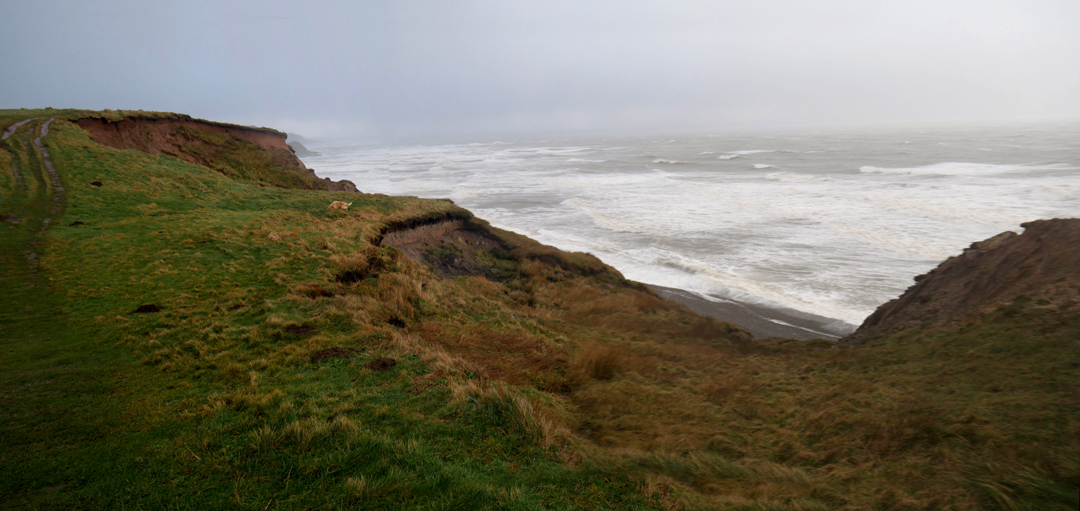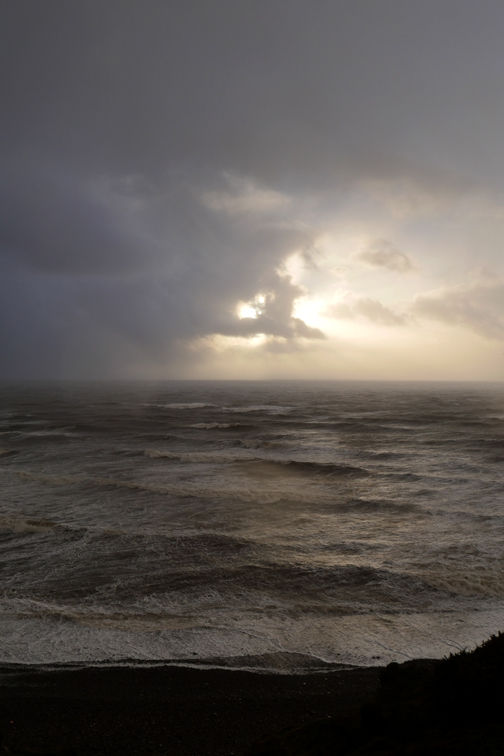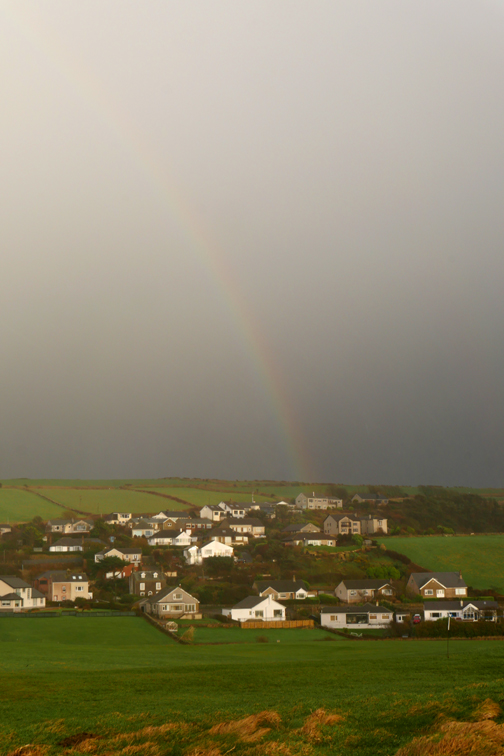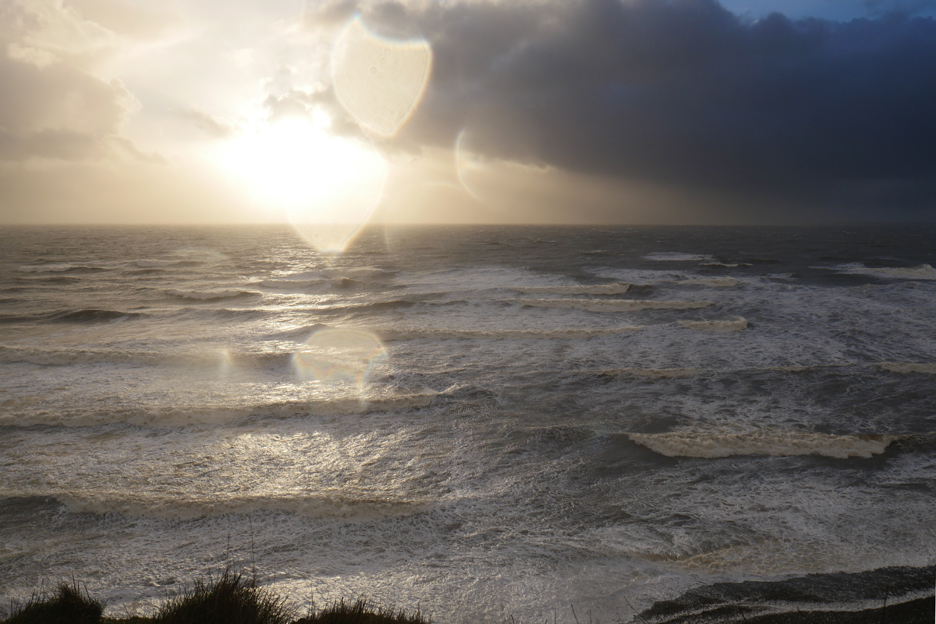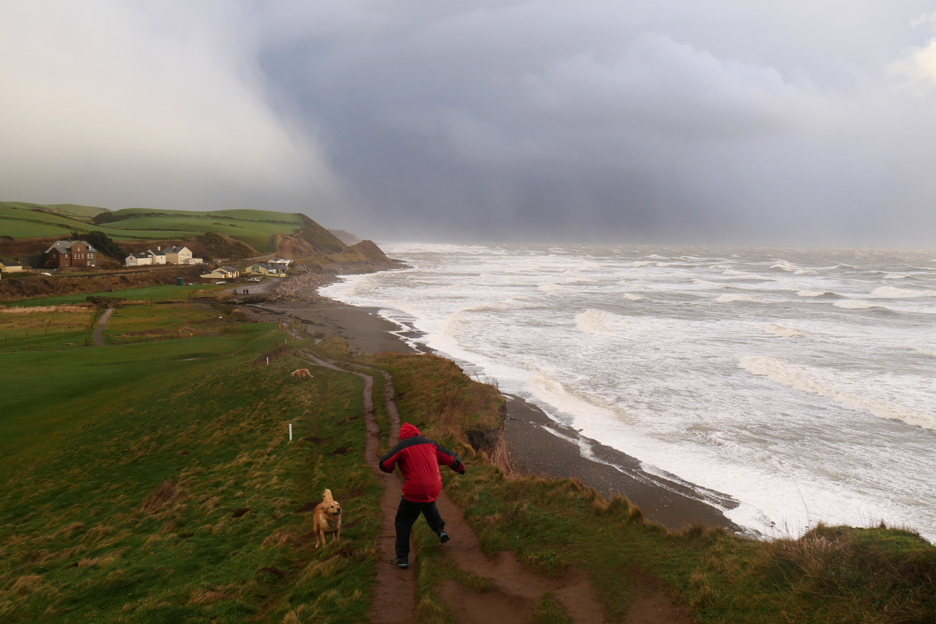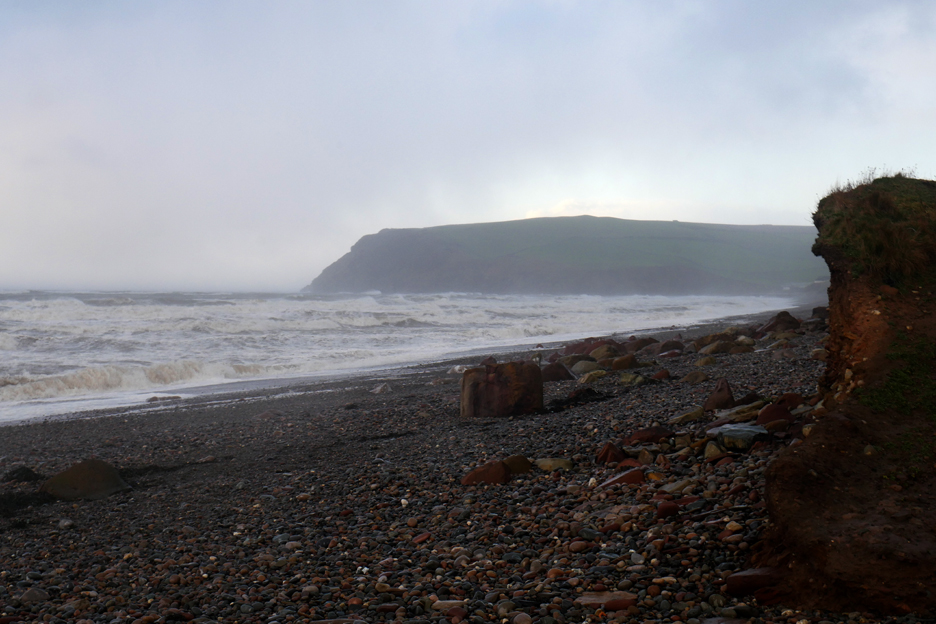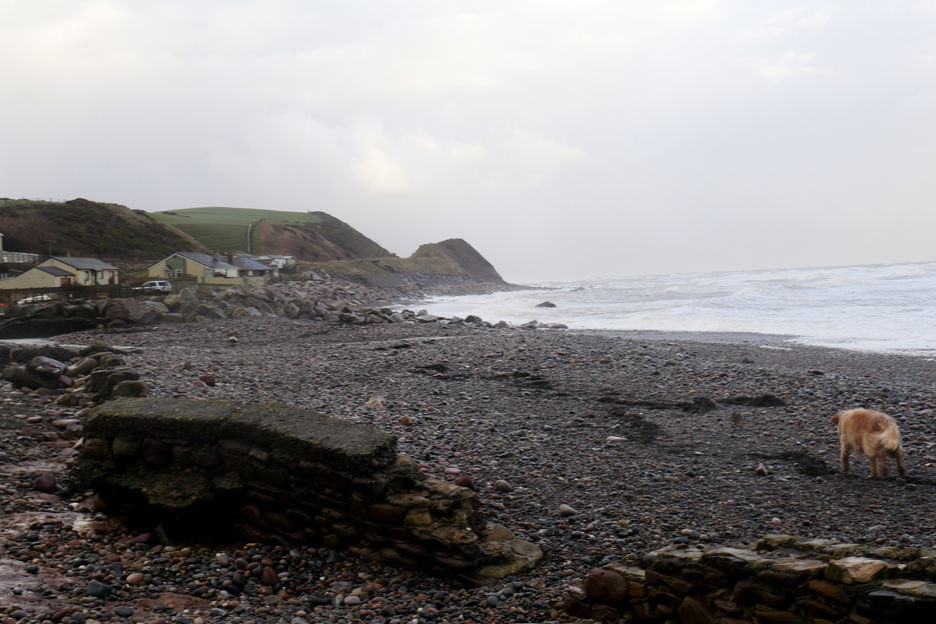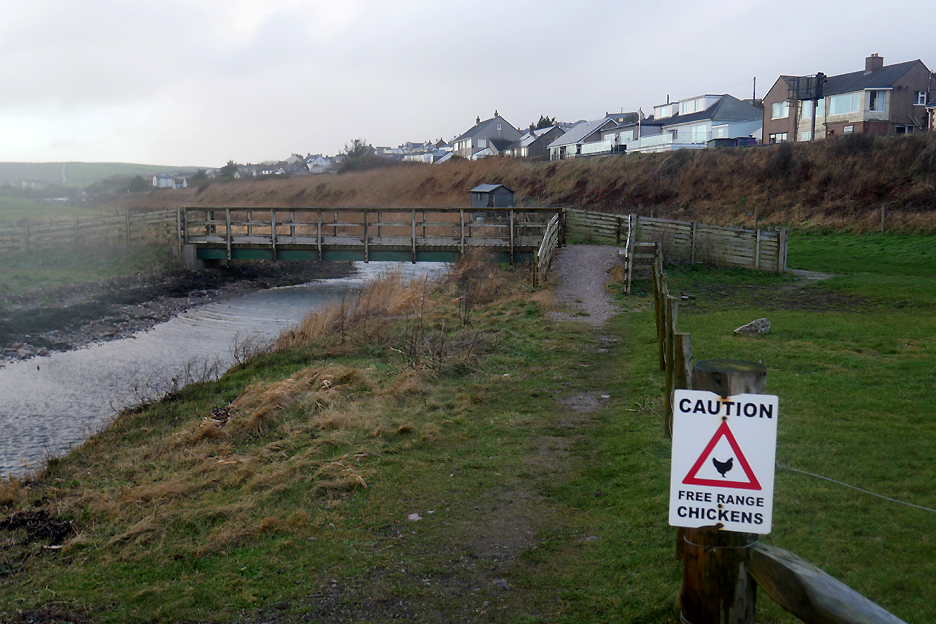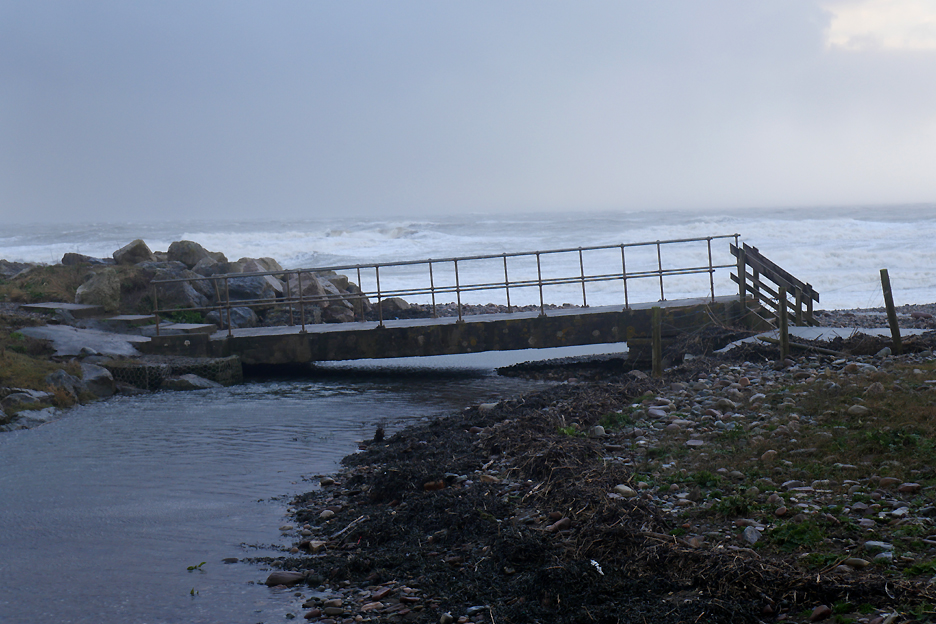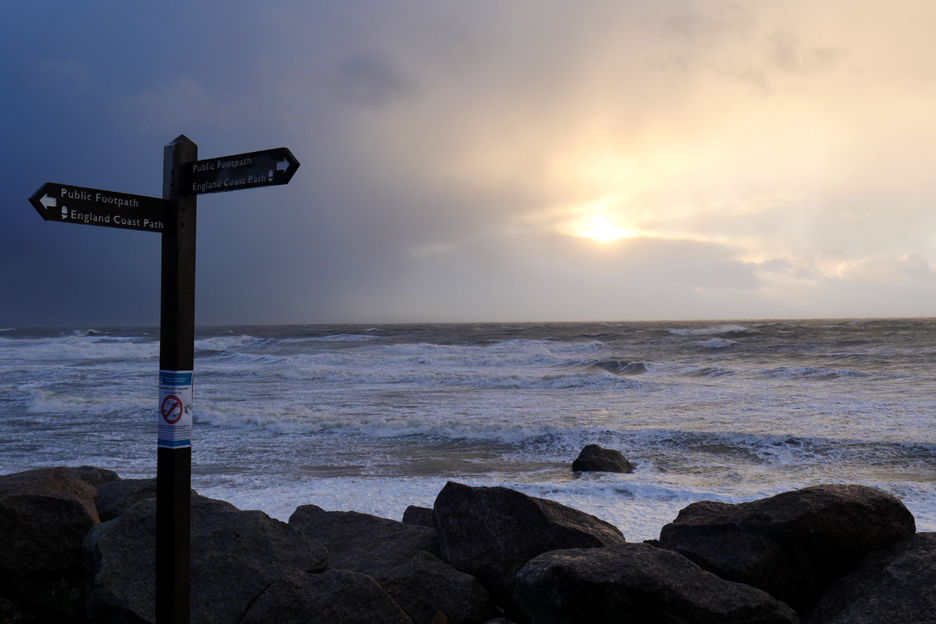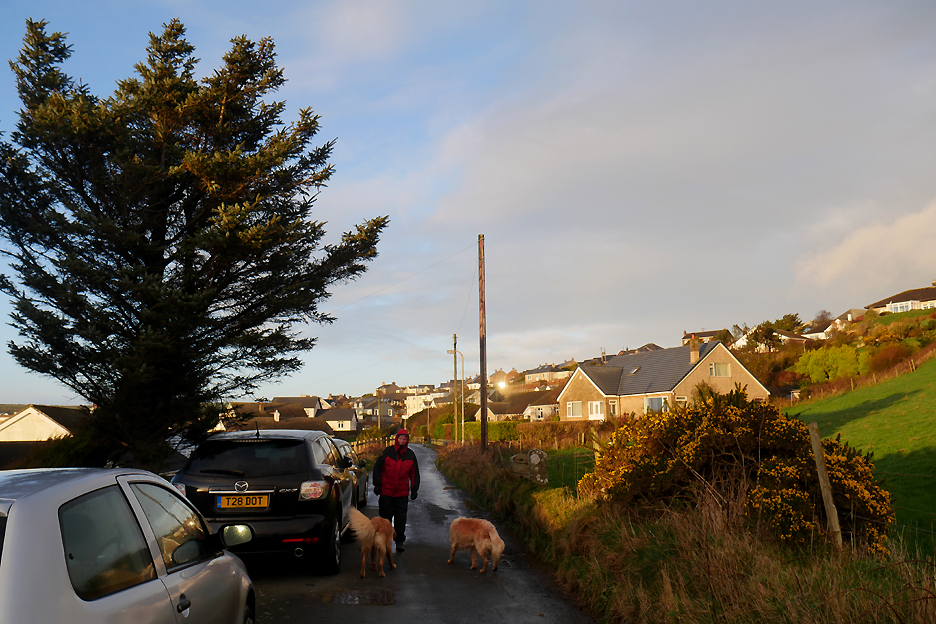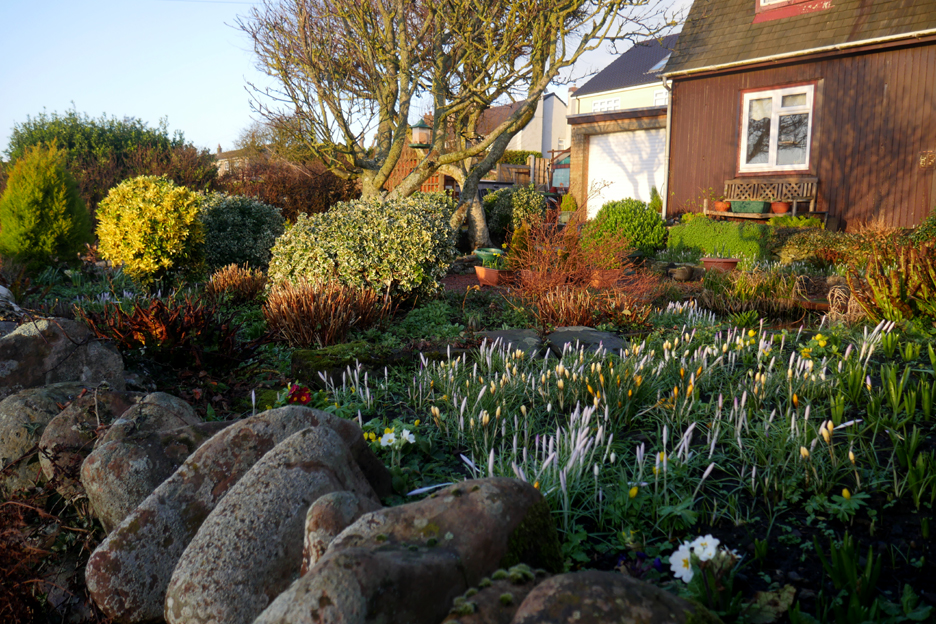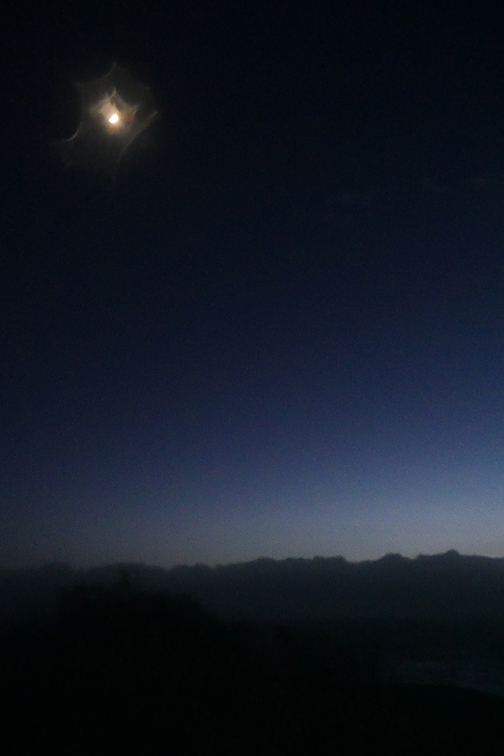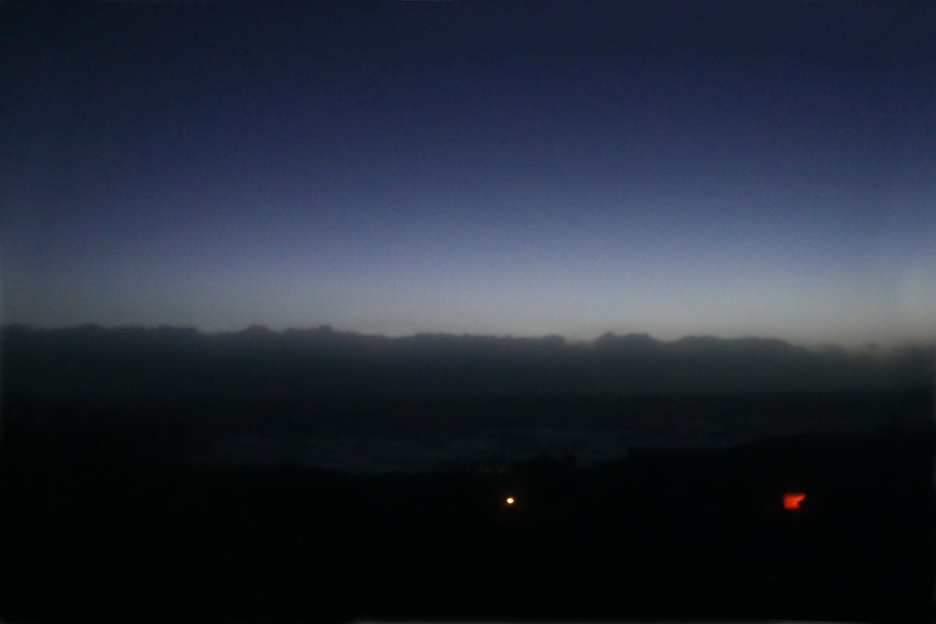|
|
||
Remember: Press F11 for a
full screen view of this page. |
Web Counter when published 1
963 963 |
|
" Stormy St Bees " Date & start time: 6th February 2022. 3 pm start. Location of Start : Town Head, St Bees, Cumbria, Uk. ( NX 972 112 ) Places visited : St Bees village, the foreshore, golf course and back. Walk details : 3 miles, 400 ft of ascent, 1 hours 30 mins. Highest point : The start point near Loes's house, 136ft - 42m above sea level. Walked with : Myself and the dogs, Dylan and Dougal. Weather : A blustery day with wintery showers and strong winds. High Tide: High tide was approximately 2pm, not long before we got there.
|
© Crown copyright. All rights reserved. Licence number PU 100034184. |
|
It wasn't actually a named storm, but there were forecasted high winds and blustery, winter showers. After a domestic morning full of housework, gardening and some wildlife views, I headed over to St Bees for an afternoon walk with Loes so as to enjoy a walk on the wild (sea)side !
" Good Morning . . . he's nuts about his breakfast "
A change of viewing position as my red squirrel continues to feed.
When you look closer there are quite a few more on the ground beneath the bird table. I counted approximately sixteen to twenty in the garden, but they are notoriously difficult to count in larger flocks.
They were joined by the robin, also picking scraps off the floor. - - - o o o - - - After lunch I drove over to St Bees to walk with Loes and to take advantage of the better weather forecast for the coast. High winds and blustery showers . . . but some sunshine in the mix over there.
Sure enough, as we started our walk around the village and down to the foreshore, the sun was shining.
Looking over the village as we walked down the Egremont Road. [ I climbed the bank to benefit from the wider view.]
Rich colours in the sun but an amazing contrast with the darkening sky. To the left of centre you can see the tower of St Bega's Priory.
Behind the wall was an old style outhouse, initially hidden from view.
St Bees is the start of Wainwright's long distance "Coast to Coast" walk, which crosses England from here to Robin Hood's Bay on the east coast. Participants may be familiar to the Cost to Coast Bar at the Manor Inn.
Alternatively they may have spent the night before they started their walk, at the Queen's Hotel.
We walk on through the village and the weather hinted at by the dark skies earlier has now arrived ! Time to zip up the waterproofs as it starts to snow.
It had partially blown over by the time we reached the railway crossing. This is the Cumbrian West Coast rail line from Carnforth via Ulverston, Sellafield, St Bees, on towards Carlisle.
St Bees Independent Boarding School, closed for a few years but is open again for both boys and girls. It originally founded in 1583 by Edmund Grindal, the Archbishop of Canterbury, as boys free grammar school.
Still damp as another shower blows through. We'll take the footpath to the left across the fields, that can be accessed by a gate this side of the white house.
Abbey Road . . . all that's missing is the zebra crossing and four pop stars.
The houses on the eastern side of town, that have developed on the higher ground on the other side of the river . . . the Pow Beck.
Walking down to the extensive foreshore car park, the Seacote Hotel has had a new coat of paint recently, and looks a lot better.
Hartley's Cafe is quiet today . . . which is not surprising for a winter's day in a beach resort.
Hot teas available as well as ice creams.
A beach front seating area, with information panels to read and seats to enjoy the sea view.
The back of the small building also has seats for sheltering from strong westerly breezes like today.
The St Bees Inshore Lifeboat buildings at the back of the slipway.
The Coast to Coast information board has pride of place close to the water's edge.
Today's winds are actually north-westerly and so the first part of the beach under the headland is less disturbed by the strong waves.
In the centre of the town beach the waves are full on and cascade up the slipway only to fall off the edges in a shower of foam.
The tide is already on the way out and so the waves only climb the shingle without reaching the promenade.
Over the years that shingle has gradually worn away the timber of the lower part of the groynes.
The purpose of the fence like structures was to reduce sideways wave action and movement of pebbles. Preventing longshore drift is an attempt to protect the nature of the beach close to the promenade. Perhaps the timbers have seen better days.
The green marker is there to warn boats of the underwater obstruction.
The drama of the skies as one squall clears away and the sun bursts through.
The intensity of colour when it first happens is dramatic. We take the path south towards the golf course and away from the beach.
From our elevated position we can look back at the tower of The Priory.
Dougal hot-footing his way to Loes waiting at the gate.
Not a lot of folk playing golf . . . the wind would be an extra handicap today !
The path reaches a dizzy 49 metres above sea level, which accounts for a third of the climbing today.
Another storm cloud approaches down the Irish Sea. You can just imagine the weather forecast map with a big blue and white splodge approaching Cumbria at high speed.
Coastal erosion over the years has formed and shaped the sand dunes.
. . . and leaving dramatic water effects on the lens of the camera.
The sun may be out but the wind hasn't dropped !
We make it safely to the beach once again. The sounds of pebbles being dragged up and down the tide line is almost lost in the sound of the wind.
Over the years the destructive nature of the waves has destroyed the old beach wall.
We cross Pow Beck on a new-ish bridge. The sign adjacent intrigued me somewhat . . . but that wooden building is someone's old chicken shed.
More evidence of the power of nature. The old concrete bridge is still usable but one end has been undermines and so it sits at a crazy angle.
We briefly regain the coast path and turn with it to cross underneath the railway, using the low bridge to the car park.
The sunshine returns, in fact the constantly changing nature of the day has been one of the great delights of this walk.
The west coast climate is milder than Loweswater as seem by this early showing of spring crocuses.
Up one of the old narrow lonnings to make our way back up the hill to the end of that rainbow. - - - o o o - - -
|
Technical note: Pictures taken with my Panasonic Lumix Gx8 Camera.
Resized in Photoshop, and built up on a Dreamweaver web builder.
This site best viewed with . . . solid boots to anchor you to the ground.
Go to Home Page . . . © RmH . . . Email me here
Previous walk - 2nd February - To Wet and Windy to Climb
A previous time up here -12th January 2013 - A West Coast ~ St Bees Sunset
Next walk - 17th February - Hen Comb between the Storms


